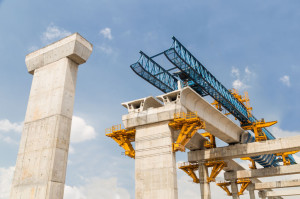 The field of engineering is a testament to human innovation and progress, with each structure standing as a symbol of our ability to shape the world around us. Yet, amidst the triumphs, there exist lessons etched in the scars of engineering disasters – reminders of the critical importance of resilience in design. In this blog post, we delve into the annals of engineering history, extracting valuable lessons from past disasters to guide us in designing structures that can withstand the tests of time and unforeseen challenges.
The field of engineering is a testament to human innovation and progress, with each structure standing as a symbol of our ability to shape the world around us. Yet, amidst the triumphs, there exist lessons etched in the scars of engineering disasters – reminders of the critical importance of resilience in design. In this blog post, we delve into the annals of engineering history, extracting valuable lessons from past disasters to guide us in designing structures that can withstand the tests of time and unforeseen challenges.
1. The Tacoma Narrows Bridge collapse: Dancing in the wind
In 1940, the Tacoma Narrows Bridge in Washington State suffered a catastrophic collapse, earning it the moniker “Galloping Gertie.” The cause? Aeroelastic flutter, a phenomenon where strong winds caused the bridge to oscillate and eventually fail. This disaster underscored the importance of considering environmental factors in structural design. Today, because of collapses like the Tacoma Narrows Bridge, engineers meticulously assess wind dynamics, conduct wind tunnel tests, and employ advanced modeling techniques to ensure structures can gracefully dance with the wind without compromising their integrity.
2. The Hyatt Regency Walkway collapse: A failure in design communication
In 1981, tragedy struck the Hyatt Regency in Kansas City when two suspended walkways collapsed during a dance competition, resulting in 114 fatalities. The disaster was attributed to a design change that was not adequately communicated or reviewed. Lessons from this incident emphasize the critical role of communication and collaboration in the design process. Modern engineering practices prioritize clear communication between designers, architects, and builders, with stringent protocols to review and approve any and all design modifications made to plans.
3. Chernobyl Nuclear disaster: The cost of ignoring safety protocols
The Chernobyl Nuclear Power Plant disaster in 1986 was a catastrophic reminder of the consequences of neglecting safety protocols. The explosion and subsequent meltdown of the reactor released large amounts of radioactive materials, impacting both human health and the environment. Today, stringent safety measures and comprehensive risk assessments are fundamental in all nuclear facility design. Engineers integrate fail-safes, redundancy systems, and rigorous safety protocols to prevent catastrophic events and protect the public and the environment.
4. The collapse of the Quebec Bridge: Lessons in inspection and maintenance
The collapse of the Quebec Bridge during construction in 1907 was a devastating engineering failure caused by a flawed design and inadequate inspections. The disaster prompted a reevaluation of inspection and maintenance practices. Modern engineering emphasizes routine inspections, utilizing advanced technologies such as drones and sensors, to detect structural issues before they escalate. Additionally, ongoing maintenance programs and procedures ensure the longevity and safety of structures throughout their lifespan.
5. Lessons from 9/11: Designing for unforeseen events
The events of September 11, 2001, highlighted the need to design structures with resilience against unforeseen events, including terrorist attacks. The Twin Towers’ collapse prompted a reevaluation of building codes, structural design, and emergency response strategies. Today, engineers incorporate blast-resistant materials, redundant structural systems, and evacuation measures to enhance the resilience of structures against man-made threats.
6. The lessons of Fukushima: Navigating natural disasters
The Fukushima Daiichi nuclear disaster in 2011, triggered by a massive earthquake and tsunami, showcased the importance of designing structures to withstand natural disasters. Engineers now focus on designing resilient structures equipped to handle seismic forces, flooding, and other environmental challenges. Incorporating advanced seismic design principles and early warning systems, engineers aim to mitigate the impact of natural disasters on critical infrastructure. Not only does this make buildings and the surrounding areas safer during natural disasters, but it is also more cost-effective.
7. The Genoa Morandi Bridge collapse: Prioritizing infrastructure maintenance
In 2018, the collapse of the Morandi Bridge in Genoa, Italy, highlighted the critical importance of infrastructure maintenance. A combination of design flaws and insufficient maintenance led to the tragedy. This disaster underscores the ongoing need for rigorous inspection, maintenance, and rehabilitation programs to ensure the longevity and safety of infrastructure. Today, engineers prioritize proactive maintenance practices to identify and address potential issues before they escalate.
In the pursuit of resilient and safe structures, the role of engineering expertise cannot be overstated. McNeil Engineering stands as a beacon of commitment to excellence in engineering practices. Their comprehensive services encompass structural engineering, civil engineering, and surveying, all guided by a dedication to safety and innovation. Visit McNeil Engineering to explore how their expertise can contribute to designing structures that stand the test of time, learn from history, and navigate the challenges of the future with resilience.
As we continue to build the world of tomorrow, let us draw inspiration from the lessons of engineering disasters. By integrating these lessons into our design processes, we pave the way for structures that not only withstand the forces of nature and unforeseen events but also contribute to a safer, more resilient future. The responsibility lies not just in the hands of engineers but in the collaboration between industry leaders, regulatory bodies, and communities, all working towards a shared vision of a built environment that prioritizes safety, durability, and innovation.








